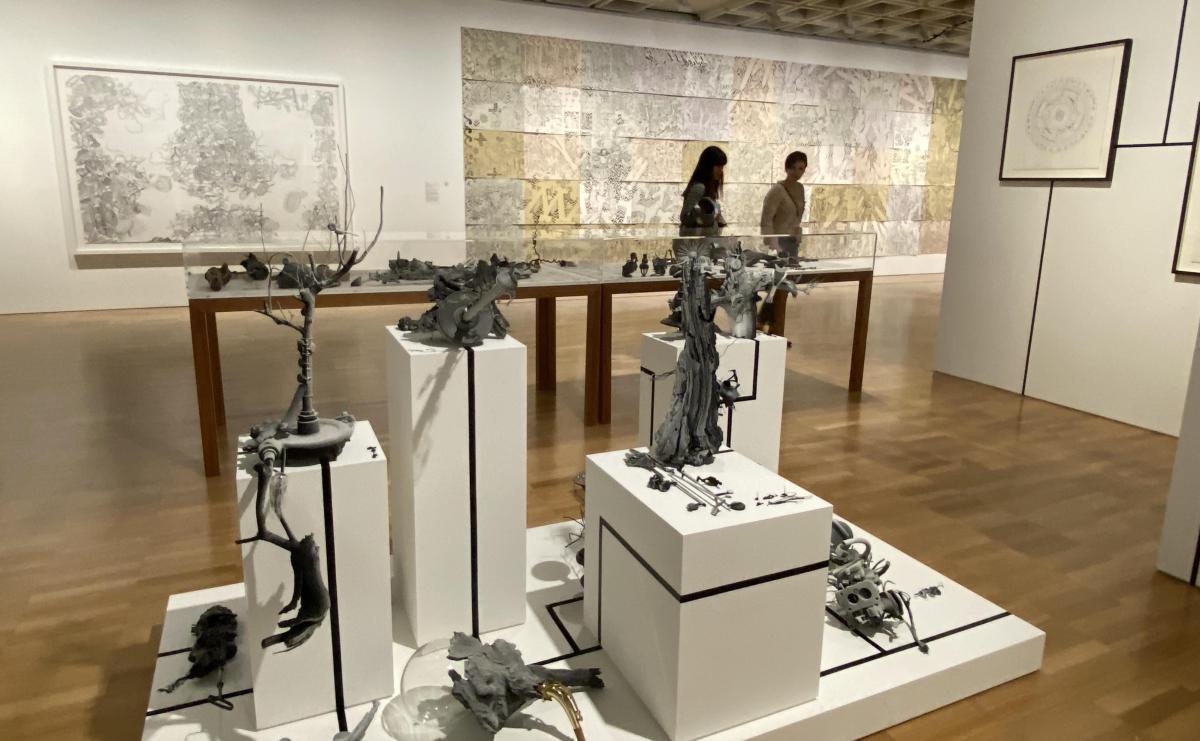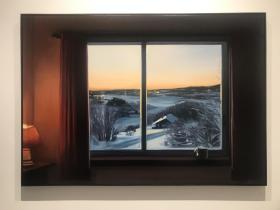Drawing has always been a studio staple. However, in recent years, the perception of drawing has undergone a metamorphosis, from a kind of preparatory meditative mindset to one that is bold, breaking and riding a fresh wave of contemporary narratives.
It is super exciting. And there is no better example of this shift than this year’s Dobell Australian Drawing Biennial – the fourth edition of the biennial – taking the title Real Worlds, in a year when we are all shifting under the weight of a very different “real world”.
Curated again by Anne Ryan, the Art Gallery of NSW curator of Australian art, she has given viewers a very ‘dimentional’ exhibition this time, pushing drawing off the wall, and richly textured with layers – both physical and metaphorical.
Ryan said that while these works for the Biennial were created both before and during COVID, they ‘speak with urgency and directness to where we are now.’
‘The immediacy and intimacy of drawing is particularly attuned to the urgency of our times, and the work of each of these artists reflects the human capacity to imagine something better, or different.’
At a time when we are witness to a global race for a vaccine and a post-truth era of fake news and assertions, the work of Jack Stahel, Untitled theory of itself (pictured top), has particular resonance.
A faux laboratory, with its paper objects and a scientific illustrations of taxonomic systems of classification, he suspends belief through familiarity, and yet, his ‘informative bunch of nonsense’ – as he describes – reinstates and authority of drawing by usurping the museological vernacular of display.
It is so deliciously complex, and simple; non-drawing and drawing; authoritative and randomly playful as it crawls the walls and flirts with space.
In a similar sense of play, Danie Mellor pushes his large familiar blue and white drawings of his mother’s Country off the wall – as if the collage elements have broken free of the frame. Like all of Mellor’s works, these new pieces express the transcendental quality of nature and its capacity to ‘give life to cultural histories’.
Does that feel more present, punched into this new dimension?

Danie Mellor A time of the world’s making 2019. Installation view Dobell Drawing Biennial 2020. Photo ArtsHub.
In some ways, these new works almost take on a diorama quality, but are void of their kitsch porthole narrative that encourages voyeurism. Rather these works, by reaching out, allow the viewer to ‘reach in’.
There is a lovely relationship between Mellor’s work and that of Becc Ország’s, whose meticulously rendered pencil drawings dig deep into the epic landscape of history. But in total contrast, Ország sources her landscapes from the internet – an assemblage of unrelated and anonymous points of reference.
Do we create the landscapes or our time, can history and place be so fabricated and selective? They are great questions that her work encourages.
Ryan describes: ‘They are not scenes taken from the world as we know it, but rather are works of fiction,’ again linking across the gallery space to Stahel’s conceptual ponderings.
A sure highlight of the biennial are the dark gothic-esq drawings by Matt Coyle, caught between a filmic reference, sci-fi surrealism and our own grappled fragments of memory. They feel very internalised, and yet universal. They have a place of great contrast in the show; very different in tone, palette and energy, demonstrating again the diversity of contemporary drawing practice.
Dominating the gallery space is the epic drawing of Martin Bell, its soft muted palette tiled out across an expansive 75 individual drawings. They are reminiscent of pages from a graphic novel or teenage doodles. But I feel irreverent to this work using that word.

Martin Bell Martin Son of the Universe, what me worry 2018–19, pen and ink on 75 sheets of paper. Installation view AGNSW. Collection of the artist. Photo ArtsHub.
Bell’s work is an outpouring of mass culture, urgent and responsive. It is like the prophecies of South Park – slightly acerbic, on point, and pulp enough to slip through the radars of the gatekeepers. Perhaps it offers the truth in our post-truth times?
I can’t finish this review without mentioning the work of Peter Mungkuri, a senior Yankunytjatjara man from Indulkana in the Anangu Pitjantjatjara Yankunytjatjara (APY) Lands in South Australia.
His lyrical ink and wash drawings depict different species of trees and emphasise the symbolic importance of trees for Anangu culture. He says: ‘…the punu (tree) is where our culture starts.’

Peter Mungkuri Punu Ngura (Country with trees) 1-4, 2018-19 black and white ink on paper. Collection Art Gallery of New South Wales. Installation view Dobell Drawing Biennial 2020. Photo Artshub.
In a year where we lost so many of our native trees to rampant bushfires, the ecological message from senior law men and elders has never been more important as we collectively face the management of our land and culture moving forward.
His suite of four large delicate ink drawings on paper seeming float in the space – timeless – yet their black definite message in Mungkuri’s hand is so vital today.
Supported by the Sir William Dobell Art Foundation, the Dobell Australian Drawing Biennial continues to be a pint sized power pack that ushers us through new thinking and new narratives for this medium. It is an exhibition not to be missed.
★★★★★ 5 out of 5 stars
Real Worlds: Dobell Australian Drawing Biennial 2020
The Art Gallery of New South Wales
Exhibition Curator: Anne Ryan, Artists: Martin Bell, Matt Coyle, Nathan Hawes, Danie Mellor, Peter Mungkuri, Becc Ország, Jack Stahel and Helen Wright
24 October 2020 – 7 February 2021





